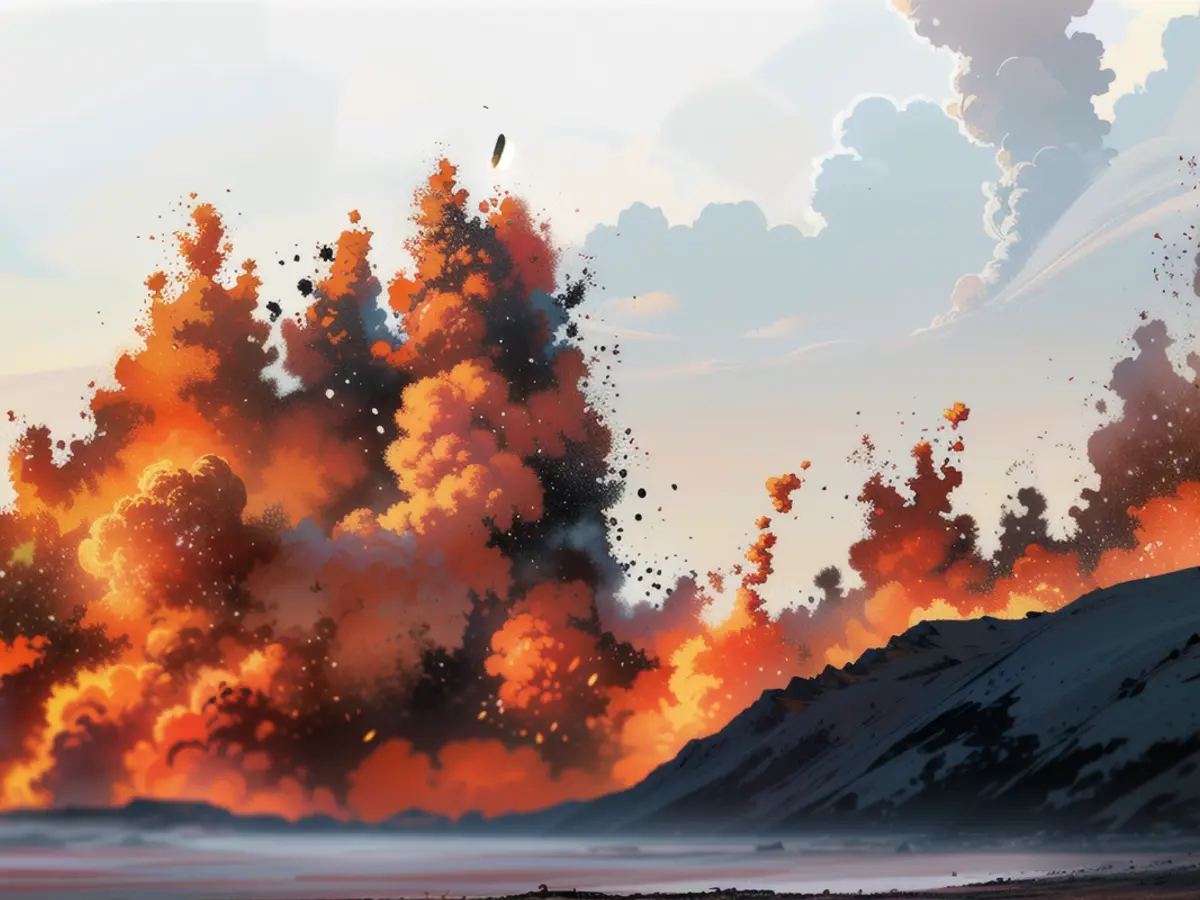Volcanic eruption shoots lava several meters above ground level
The small island nation of Iceland is currently dealing with its fifth volcanic eruption since December. The latest eruption is causing greater concern as the lava is shooting out of the ground with more force compared to previous occurrences. The lava flows are moving closer to the town of Grindavík, which was largely evacuated in November.
Recently, the Icelandic peninsula of Reykjanes has once again experienced a volcanic eruption. The incident started quietly early in the morning, as reported by the Icelandic Meteorological Office. However, the eruption quickly gained intensity. The fracture from which the molten rock is flowing is now a staggering 3.5 kilometers long. Melted rock was shot up to as high as 50 meters. About 1000 cubic meters of lava spilled from the fissure every second.
The current eruption marks the fifth since December and is the most severe in the area so far. The lava is yet again threatening the 3800-resident town of Grindavík, which had been largely vacated in November. The police urged citizens who had not yet left the city to do so immediately. The lava has already blocked two of the three roads leading to Grindavík, and it's fast approaching the third. The popular Blue Lagoon tourist spot was also evacuated. Approximately 700 people were reportedly there when evacuation began.
In the words of geophysicist Kristín Jónsdóttir of the Icelandic Meteorological Office, "the earth has opened with great force." More magma has amassed than in previous eruptions, and the flow out of the fissure was predicted based on measurements. "We've been anticipating this eruption for a while, and it's something of a relief that it's happening now," said Jónsdóttir. Barriers were constructed to protect Grindavík, and they are proven to be effective in deflecting the lava.
The future of Grindavík remains uncertain
A dark ash cloud hovered above the fissure, report scientists, which was caused by the explosive interaction of magma and groundwater. This situation poses no immediate danger to aviation, said Jóhanna Málm Skúladóttir of the RÚV weather service. Scientists closely monitor the situation.
The small town of Grindavík is located roughly 50 kilometers southwest of the capital city of Reykjavík. During a previous eruption, some houses were destroyed. It is still unknown if the residents will be able to return to their homes after the eruption. The area belongs to the Svartsengi volcanic system, which has been active again after nearly 800 years of inactivity.
Owing to its location over two tectonic plates that slide against each other, magma can rise close to the surface of the earth, making volcanic eruptions and earthquakes common occurrences. Iceland capitalizes on its geographic position by tapping into geothermal energy, including at the Svartsengi power plant. In recent years, the eruption of the Eyjafjallajökull volcano caused the most disruption when many flights had to be rerouted or cancelled due to volcanic ash. In 2010, this issue made international headlines.
Read also:
- Floods: water levels remain critical in many places
- Snow chaos further restricts Bavaria
- Continuous operation in the flood areas
- Flood situation remains tense in many places
The current volcanic activity in Iceland has been increasingly frequent, with the small town of Grindavík being threatened for the second time in a few months. This international concern stems from the Svartsengi volcanic system, which has seen eruptions after an 800-year silence.
Despite the ongoing threats, Iceland's strategic location over two tectonic plates allows the country to harness geothermal energy, a resource that was put to use during the disruption caused by the Eyjafjallajökull volcano in 2010.
Source:






